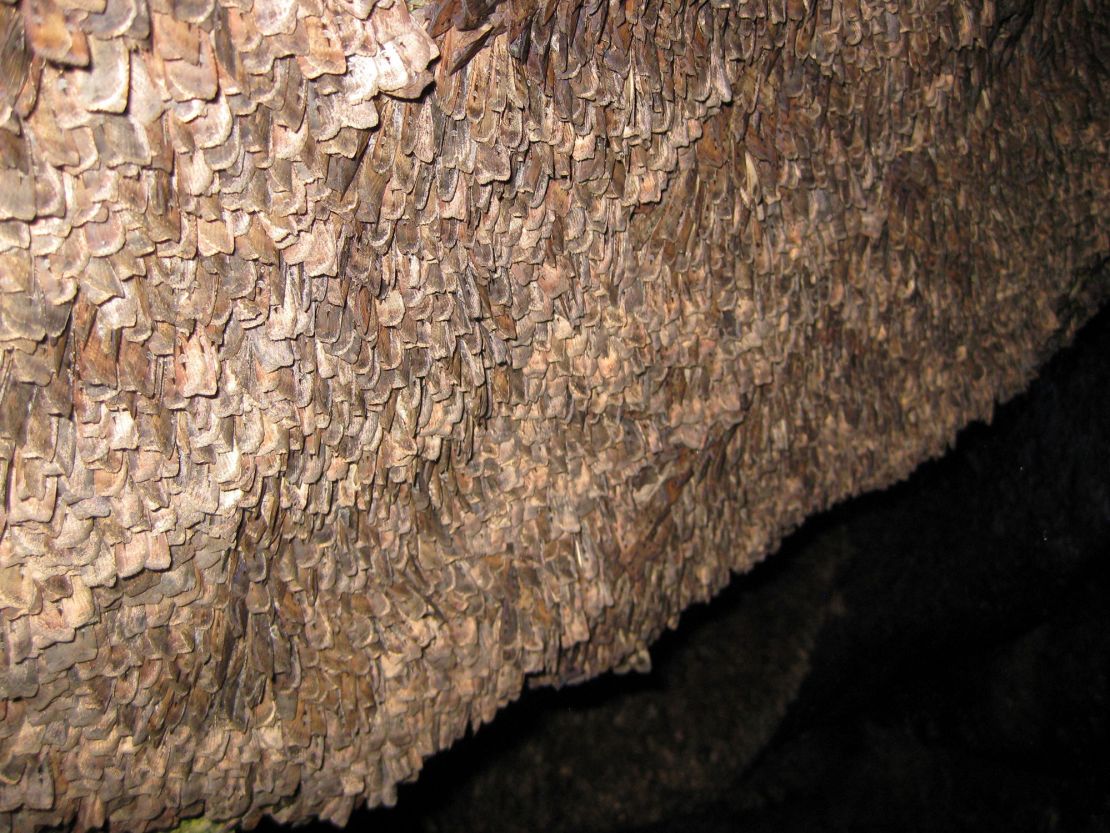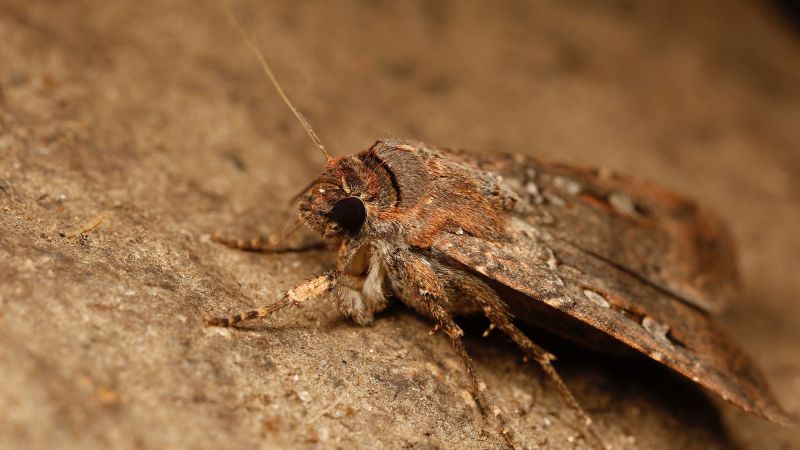(CNN) — Each year, a tiny species in Australia makes a grueling 620-mile (1,000-kilometer) nighttime migration, and it’s pulling off the feat in a way only humans and migratory birds have been known to do, a new study has found.
Bogong moths looking to escape the heat travel in the spring from all over southeastern Australia to cool caves in the Australian Alps, where they huddle in a dormant state. The insects then fly all the way back in the fall to mate and die. Researchers replicated the conditions of this astonishing journey in the lab and discovered a key tool the moths used to find their way: the starry night sky.
“It is an act of true navigation,” said Eric Warrant, head of the Division of Sensory Biology at Lund University in Sweden, and a coauthor of the study published Wednesday in the journal Nature. “They’re able to use the stars as a compass to find a specific geographic direction to navigate, and this is a first for invertebrates.”
Stars are not the only navigational cue the insects use to reach their destination. They can also detect Earth’s magnetic field, according to evidence found by previous research conducted by Warrant and some of his colleagues from the new study. By using two cues, the moths have a backup in case either system fails — for example, if there is a magnetic anomaly or the night sky is cloudy.
“With a very small brain, a very small nervous system, (the moths) are able to harness two relatively complex cues and not only detect them, but also use them to work out where to go,” Warrant added.
“And I think that just adds a piece to the growing consensus that the insects have quite remarkable abilities and are truly amazing creatures.”
Native to Australia, the Bogong moth, or Agrotis infusa, is entirely nocturnal and has an adult wingspan of about 2 inches (5 centimeters).
“They’re a very nondescript little brown moth, that people would not necessarily distinguish from any other little brown moth,” Warrant said.
Even though the moths normally migrate in the billions, their numbers have crashed in recent years, and the species is now endangered and appears on the International Union for Conservation of Nature’s Red List.
After discovering about five years ago that the insects could sense Earth’s magnetic field, Warrant said he suspected that they might also be using visual cues to support their navigation.
To test the theory, Warrant — who is from Australia — set up a lab with his colleagues in his own house, about 93 miles (150 kilometers) north of the moths’ final destination in the Australian Alps.

“We captured the moths using a light trap, we brought them back to the lab, and then we glued a very thin rod on their back, made out of tungsten, which is nonmagnetic. Once you’ve done that, you can hold that little rod between your fingers, and the moth will fly very vigorously on the end of that tether,” he said.
The researchers then coupled that rod to another one, also made of tungsten but much longer, allowing each moth to fly in any direction while an optical sensor detected exactly where the insect was going, relative to north, every five seconds.
The experiment was set up in an enclosed, cylindrical “moth arena,” with an image of the southern night sky projected on the roof, replicating exactly what was outside the lab on the day and time of the experiment.
“What we found is that moth after moth flew in their inherited migratory direction,” Warrant said. “In other words, the direction they should fly in order to reach the caves in spring, which is a southwards direction for the moths we caught, or northwards away from the caves in autumn, which is very interesting.”
Crucially, the effect of Earth’s magnetic field was removed from the arena, via a device called a Helmholtz coil, which created a “magnetic vacuum” so that the moths could only use visual cues.
“The moths couldn’t rely on the Earth’s magnetic field to do this task,” Warrant said. “They had to rely on the stars. And they did.”
About 400 moths were captured for this behavioral experiment and safely released afterward. The researchers collected a smaller sample of about 50 moths to try to understand the neural mechanism they used to navigate, which involved sticking electrodes in the insects’ brains and resulted in death.
“A little moth can’t see many stars, because its eye has a pupil which is only about 1/10th of the width of our own pupil at night,” Warrant said. “But it turns out, because of the optics of the eye, they’re able to see that dim, nocturnal world about 15 times more brightly than we do, which is fantastic, because they would be able to see the Milky Way much more vividly.”
Warrant said he believes the insects are using this enhanced brightness as a visual compass to keep heading in the right direction.
Apart from birds and humans, only two other animals navigate in a similar way, but with crucial differences from the moths, according to Warrant. The North American monarch butterfly also migrates over long distances using a single star as a compass, but that star is the sun, as the insect only flies during daytime. And some dung beetles use the Milky Way to find their way at night, but for the much simpler task of going in a straight line over a short distance, which does not really compare with the moths’ long journey to a highly specific destination.
What makes the Bogong moth’s skill even more extraordinary is that the insect only makes this trip once in its life, so its ability to navigate must be innate.
“Their parents have been dead for three months, so nobody’s shown them where to go,” Warrant said. “They just emerge from the soil in spring in some far-flung area of southeastern Australia, and they just simply know where to go. It’s totally amazing.”
‘Many questions remain’
Warrant and his colleagues have not only discovered an entirely new compass mechanism in a migrating insect, but they have opened up an exciting avenue of research, as there are still many questions remaining about how the moths detect and use the information from their star compass, according to Jason Chapman, an associate professor at the Centre for Ecology and Conservation of the UK’s University of Exeter. Chapman was not involved in the new research.
“Many questions remain,” he added via email, “such as how the Bogong moths detect the information, how they use it to determine the appropriate direction in which to fly through the course of the night and between seasons, how they integrate their star and magnetic compasses, and how widespread these mechanisms may (or may not) be among other migratory moths and other nocturnal insects.”
The findings are really exciting and add to scientists’ knowledge about the ways that insects travel vast distances across continents, said Jane Hill, a professor of ecology at the University of York in the UK, who also was not involved with the study.
“They are able to navigate in the appropriate direction even though the stars move each night across the sky,” she said. “This feat of insect migration is even more amazing given that different generations make the journey each year and there are no moths from previous generations to show the way.
Sign up for CNN’s Wonder Theory science newsletter. Explore the universe with news on fascinating discoveries, scientific advancements and more.

